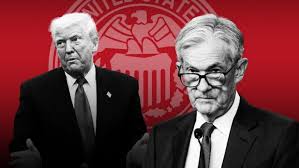Understanding the FOMC and Its Impact on Monetary Policy

Introduction
The Federal Open Market Committee (FOMC) plays a crucial role in shaping the monetary policy of the United States. As the principal body responsible for overseeing the nation’s open market operations, the FOMC’s decisions influence inflation, employment, and overall economic stability. With ongoing fluctuations in the global economy, understanding the FOMC’s recent actions is essential for investors, businesses, and policy analysts alike.
Recent Developments from the FOMC
In its latest meeting on September 20, 2023, the FOMC decided to keep the federal funds rate unchanged at a target range of 5.25% to 5.50%. This decision followed a series of interest rate hikes implemented throughout 2022 and early 2023 aimed at curbing inflation, which had significantly risen due to various global factors, including supply chain disruptions and energy price increases.
During the meeting, FOMC Chair Jerome Powell highlighted that inflation remains above the committee’s long-term target of 2%, but there are indications that growth is moderating. He emphasized the need for patience, stating that further tightening may be warranted depending on economic data trends in the coming months.
Key Economic Indicators
The FOMC closely monitors key economic indicators such as the Consumer Price Index (CPI), unemployment rates, and Gross Domestic Product (GDP) growth. Recent reports have shown that inflation has slowly begun to ease, with CPI growth dropping to an annual rate of 3.7% in August, down from 9.1% last summer. However, the labor market remains tight, with unemployment hovering around 3.8%.
The committee also discussed risks related to the ongoing conflict in Eastern Europe, which could impact global energy markets, as well as potential financial instability resulting from rising interest rates on credit markets. These factors contribute to the cautious approach the FOMC is taking in its policymaking process.
Conclusion and Outlook
Looking ahead, the FOMC will continue to assess economic conditions to determine the appropriate stance of monetary policy. Analysts believe that while rates may remain steady for now, a potential hike could occur in late 2023 or early 2024 if inflation shows signs of re-accelerating. The decisions made by the FOMC are pivotal, not merely for the U.S. economy, but for global markets that are intricately connected to American economic health.
For individuals and businesses alike, staying informed about FOMC meetings and understanding their implications is vital for strategic financial planning. The outcomes of these decisions can influence everything from mortgage rates to credit conditions, making the FOMC a central figure that shapes economic landscapes far beyond the United States.









